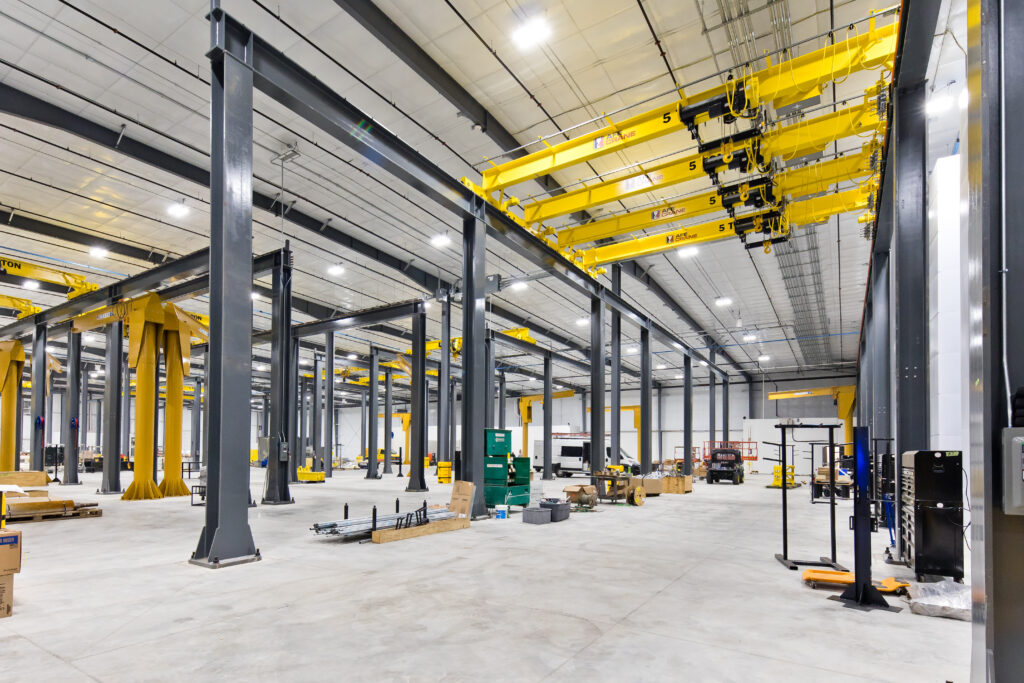Call us today at (800) 728-0818

The foundation of any efficient and reliable overhead material handling system lies in its supporting steel structure. At AFE Crane, we understand that a robust, precisely engineered framework is critical for maximizing the performance and safety of your cranes and hoists. We specialize in designing, fabricating, and installing custom crane supports and steel structures, including crane runways, monorail systems, and patented track solutions, tailored to your unique operational demands. Discover how our expertise in structural steel fabrication can ensure seamless integration and long-term reliability for your lifting applications.
Runways are the supporting structure of an overhead crane that creates the track on which the crane can travel. The main components include support columns, bridge girders, and rails and are configurated to meet your requirements.
A crane monorail system functions like a simpler version of a bridge crane system utilizing a single beam for the track of the crane. An overhead monorail system is an excellent solution when moving parts from station-to-station in an assembly facility.
Patented track rail offers high-strength, precision-machined durability for smooth, low-friction operation. Made from hardened steel, it resists wear, reduces maintenance costs, and lowers structural stress. Ideal for crane systems, monorails, and custom trolley applications.
AFE Crane designs, engineers and fabricates supporting structural steel to meet the requirements of our customer’s crane system. AFE Crane is also able to have our runway and structural system stamped by a Professional Engineer licensed by the National Society of Professional Engineers.
Determining the correct load capacity and structural design for your crane runway involves a thorough assessment of several factors. These include:
Monorail systems offer several advantages over traditional bridge cranes, particularly for applications involving repetitive, linear movement:
However, bridge cranes offer greater flexibility for covering larger areas and handling more complex lifting tasks. The best choice depends on your specific operational requirements and the layout of your facility.
Yes, absolutely. AFE Crane understands the importance of safety and compliance. We have the capability to provide professional engineering certification for our supporting steel structures. Our designs and fabrications can be stamped by a Professional Engineer licensed by the National Society of Professional Engineers. This certification ensures that your structure meets all applicable industry standards and regulations, providing you with peace of mind and demonstrating our commitment to quality and safety. We know that this is vital for insurance and permit purposes, and are ready to provide this service.